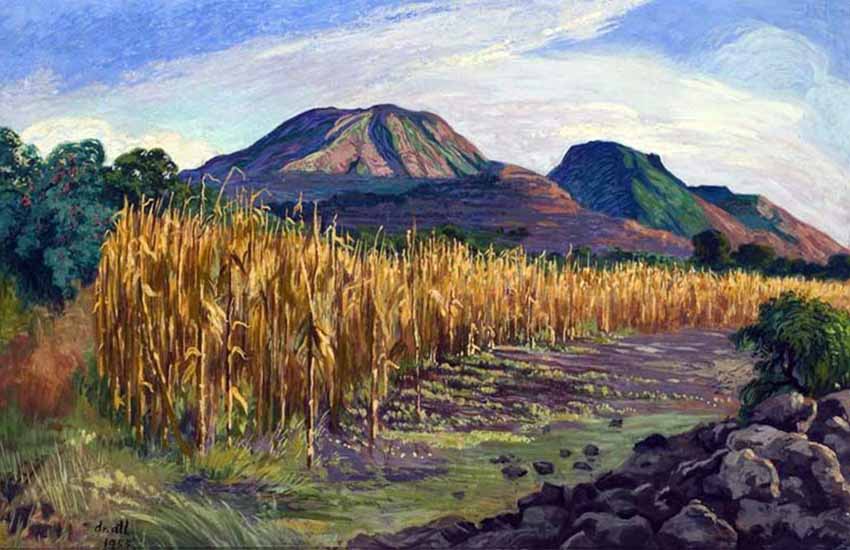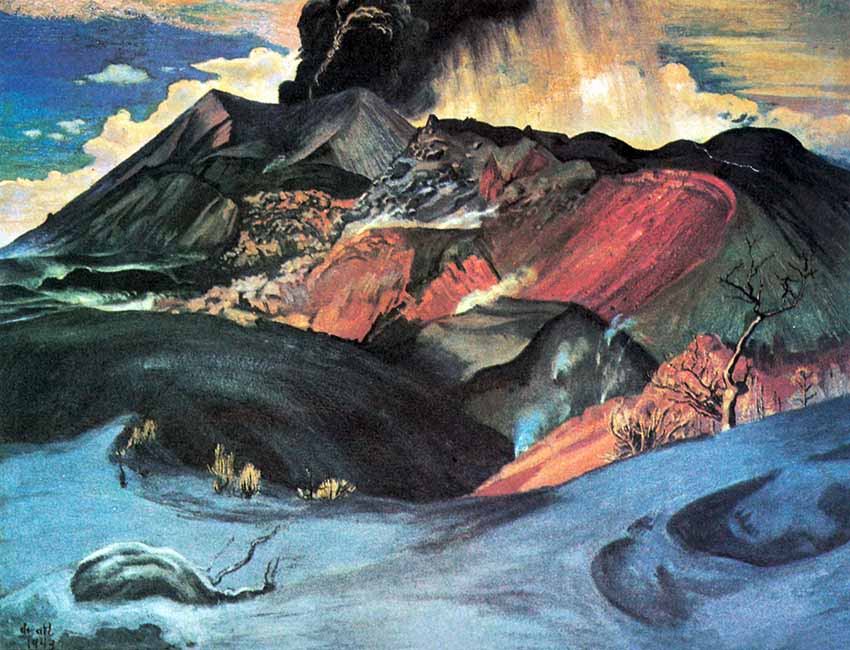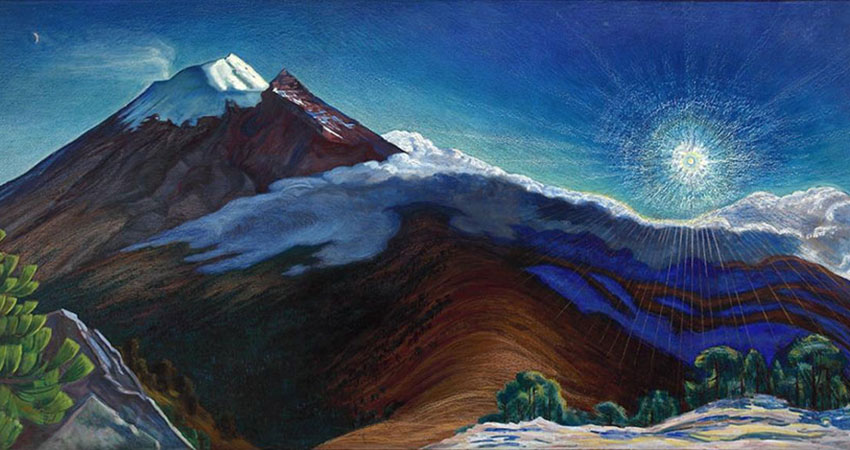October 3 is the birthday of a Mexican who was called “one of the most curious personalities born in the modern New World” by muralist Diego María de la Concepción Juan Nepomuceno Estanislao de la Rivera y Barrientos Acosta y Rodríguez — today more commonly known as Diego Rivera.
I knew Dr. Atl was a painter and a volcanologist and that he had been born in Guadalajara — but not much more than that. So, although I am over 80, I decided to follow the custom of Gen Alpha when they want to learn about any subject: go find a video on YouTube.
I came upon what I thought was a 25-minute documentary on Dr. Atl by Mexican cinematographer Jaime Kuri Aiza.
To my surprise, I got far more than I bargained for. That short film turned out not to be a typical documentary at all. I can only call it “an experience.” Kuri used camera work and music to plunge me into Atl’s paintings, to force my eye to look where I wouldn’t ordinarily look. It was an extraordinary voyage and I strongly recommend you take the trip.
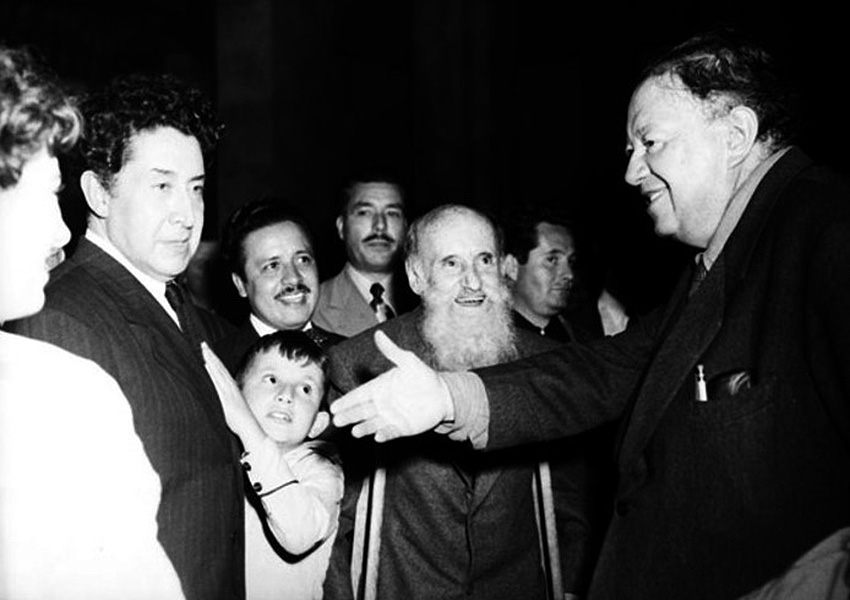
In this little film, narration plays almost no role at all, so you will appreciate the effect even if you don’t speak a word of Spanish.
Watch Kuri’s Dr. Atl and, like me, you will then be curious to know more about the man whose paintings you have so delightfully explored.
But why did Diego Rivera consider Dr. Atl such an unusual character?
The man who called himself Dr. Atl was born Gerardo Murillo, in Guadalajara, Jalisco, on October 3, 1875. His biography states that he was a painter, a writer, an explorer, a geologist, a philosopher, a historian, an art critic, a stylist, a doctor, a professor, a political commentator, a journalist, a statesman, a novelist, a cartoonist, a poet and a chef. Need I say more?
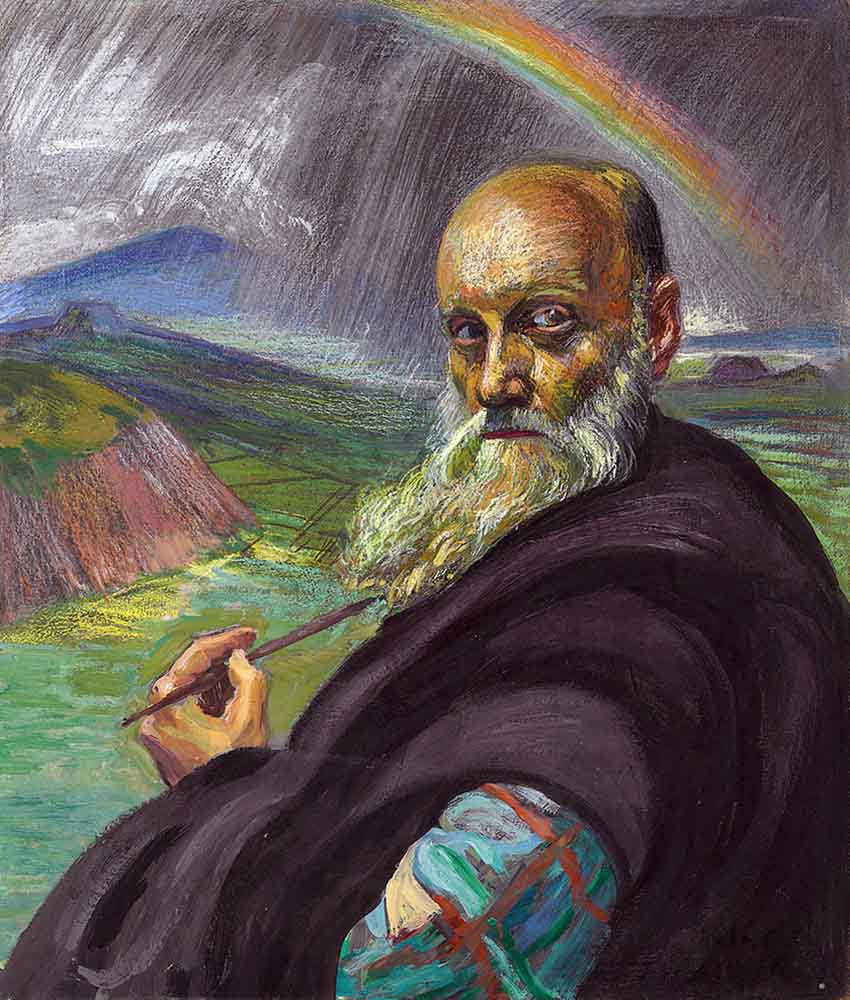
As for his curious nom de plume, it is said that Murillo survived a shipwreck at some point in his life and told a friend that he felt reborn and had decided to change his name. I can only imagine the conversation that ensued:
Friend: So what’s your new name?
Murillo: Agua
Friend: You’re going to call yourself Agua? Just Agua?
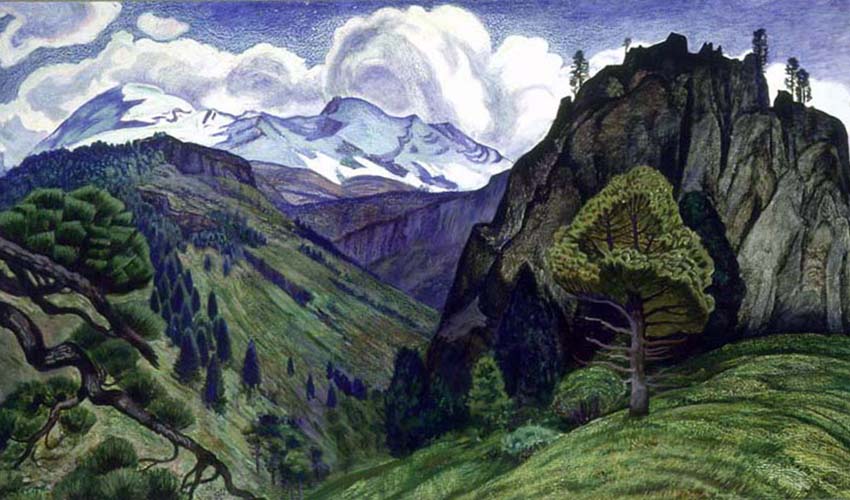
Murillo: Yes.
Friend: Er, how about agua in another language?
Murillo: Hmm, maybe eau.
Friend: Eau doesn’t have much punch. What is agua in Nahuatl?

Murillo: Atl. I am Atl!
Friend: That’s kind of short.
Murillo: OK, Dr. Atl.
Dr. Atl studied painting in Mexico and then went off to Europe where his eyes were opened. There he discovered the impressionists and the post-impressionists.
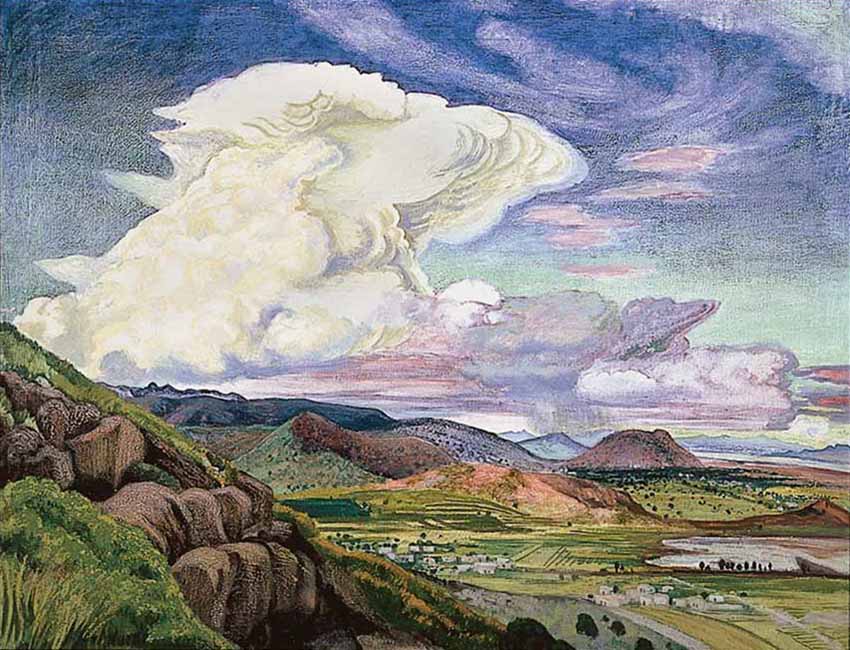
Then he came back to Mexico, where art students were being forced to spend all their time imitating the Old Masters and copying religious themes. In no time, he stirred things up in the world of art, gaining the nickname “The Agitator.” Three of his students were José Clemente Orozco, Diego Rivera and David Alfaro Siqueiros. He and his students and friends eventually organized a collective painting exposition which turned out to be a tremendous success.
Not only was Dr. Atl the teacher of Mexico’s most famous muralists, but, according to historian Tony Burton, “In 1910, only months before the Mexican Revolution began, Atl painted the first modern mural in Mexico – scenes of female nudes – using Atlcolor, a substance he himself had invented for use on a wide variety of surfaces including plaster, fabric and board.”
Here is what Orozco writes in his autobiography, about Dr. Atl:
“Atl had a studio in the Academy, and he used to visit with us in the painting rooms and the night classes. While we were copying, he would entertain us, speaking in his easy, insinuating, enthusiastic tone, of his travels in Europe and his stay in Rome. When he spoke of the Sistine Chapel and of Leonardo, his voice took fire … In the nightly sessions in the Academy, as we listened to the fervent voice of that agitator Dr. Atl, we began to suspect that the whole colonial situation was nothing but a swindle foisted upon us by international traders. We too had a character, which was quite the equal of any other. We would learn what the ancients and the foreigners could teach us, but we were able to do as much as they, or more. It was not pride but self-confidence that moved us to this belief, a sense of our own being and our destiny.”
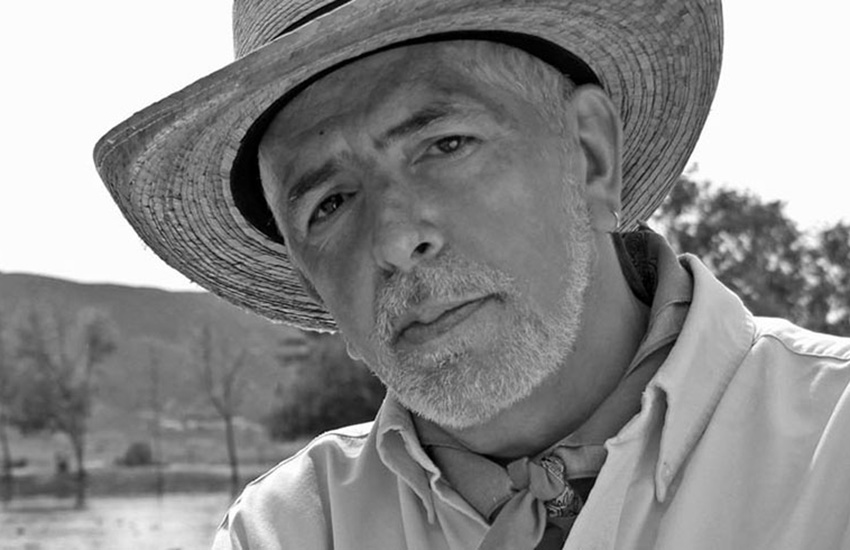
Atl loved the outdoors. He was a hiker and a climber, and he was particularly fascinated by volcanoes. Perhaps “fascinated” is an understatement. According to writer Eugenia Pérez Olmos, “For two long years Dr. Atl spent all his days and nights on the frozen slopes of Popocatépetl and even inside its treacherous crater. He literally lived the life of an Eskimo, surviving snowstorms and blizzards, forever with his palette in hand, teasing out the secrets of every cloudscape, every wisp of mist, every avalanche of tempestuous thunderheads, every sunset pregnant with tenuous shafts of light.”
And then, on February 20, 1943, a new volcano sprang up, as Atl put it, “in my own back yard.”
On that day, farmer Dionisio Pulido was working in his cornfield near the village of Paricutín, in Michoacán, when a small hill appeared where one had never been before. Then, atop the hill, appeared a crack two meters wide. With a sound like thunder, the hill belched grey ash into the air.
“When night began to fall,” wrote local resident Celedonio Gutierrez in his diary, “we heard noises like the surge of the sea, and red flames of fire rose into the darkened sky — some rising 800 meters or more into the air — that burst like golden marigolds, and a rain like artificial fire fell to the ground.”

Never before had scientists had an opportunity to witness the birth of a scoria volcano and Dr. Atl, of course, was hooked. He would spent months alongside the new volcano, sketching, writing and painting, not without risk, as he describes in his book on Paricutín:
“Returning to my little camp, step by step, admiring the volcano’s solemn southern side, the earth shook, and amid detonations, the base of the cone, next to the great dark lump, sprouted bouquets of fire wrapped in clouds of dust. A river of lava ran down towards me. The heat suffocated me. I wanted to flee, but my legs refused to move. Clinging to a little trunk of an oak, I felt myself burn. There was nothing left to do but to look before dying.
“The wide river of lava hurled down a cascade, while from the igneous fountain surged an enormous whirlpool of thick red flames, as other whirlpools of dust accompanied it in a fantastic dance. The burning column extended its high point into the shape of a cloud. I thought vaguely of running, but I could not move. My arms were slipping from the trunk of the little tree, and I should have fallen onto the ground. Unexpectedly the west wind pushed the dust, flames and heat along the base of the cone. I could breathe and recover my senses, but I remained stuck to the ground. I waited a long while, and, a bit recovered, I got up; slowly I approached the edge of the lava, which had stopped a few meters from my camp…”
And now, if you didn’t watch that short by cinematographer Kuri, go and do it, and — without risking your life — see the volcano as Dr. Atl saw it.
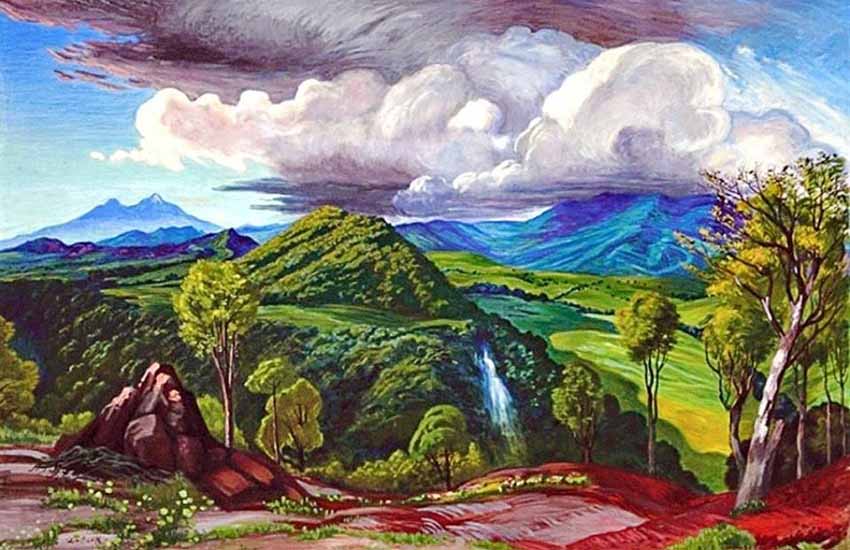
The writer has lived near Guadalajara, Jalisco, since 1985. His most recent book is Outdoors in Western Mexico, Volume Three. More of his writing can be found on his blog.
